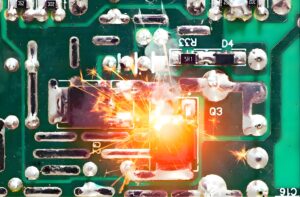NEWS

What are the PCBA acceptance criteria?
The acceptance criteria for PCBA involve multiple aspects such as appearance, size, welding quality, electrical performance, environmental requirements, and functional testing.

PCB stack design achieves a balance between performance, cost, and reliability
PCB stack design is an important step before circuit board layout design, which involves the arrangement of copper and insulation layers that make up the PCB. Through reasonable stack design, the performance, reliability, and cost of the circuit board can be ensured to achieve the best balance.

Detailed steps and operation guide for BGA soldering
BGA soldering is a technically demanding and operationally complex process that requires strict adherence to process specifications and operating guidelines to ensure soldering quality and reliability of electronic products.

Optimizing PCB Circuit Board Design:,Checking and Preventing Short Circuits
Checking and avoiding PCB short circuits requires comprehensive consideration of multiple aspects such as design, manufacturing, testing, and quality control.

Seven core advantages of PCBA one-stop service
PCBA one-stop service refers to entrusting the entire PCBA process, including design, procurement, processing, testing, etc., to a professional PCBA manufacturer

How to coordinate SMT surface mount processing with PCB design
the coordination between SMT surface mount processing and PCB design is the key to achieving efficient and high-quality electronic manufacturing. By strengthening communication and collaboration between the two, continuously optimizing design schemes and processing flows

Selection criteria for circuit board substrates
The performance and reliability of a circuit board largely depend on the selected substrate, which not only carries circuit components but also provides electrical insulation, mechanical support, and thermal management functions.

Don’t ignore these 11 details when designing PCB!
10 details to pay attention to when designing PCB, including spacing between components, arrangement of decoupling capacitors, serpentine routing design, heat dissipation of specific area solder pads, and heat dissipation of specific area solder pads

The role of PCB IMMERSION GOLD process
As an advanced PCB surface treatment process, the immersion gold process can significantly improve the soldering performance, corrosion resistance, and conductivity of PCBs, making it an essential process for electronic manufacturing.

Differences in Characteristics and Applications between SMT and DIP
SMT and DIP are two important electronic component installation methods, each with unique characteristics and application scenarios. When choosing which technology to use, it is necessary to comprehensively consider factors such as specific application requirements, production costs, and production efficiency.

Reasons and optimization strategies for material loss in SMT surface mount processing
In the SMT surface mount processing, material loss is an issue that cannot be ignored. It not only relates to the control of production costs, but also directly affects the economic benefits and market competitiveness of enterprises.

PCB hard board and FPC soft board: how to make the best choice according to needs
When choosing PCB hard board and FPC soft board, multiple factors need to be considered, including application requirements, performance characteristics, cost budget, and production process.





